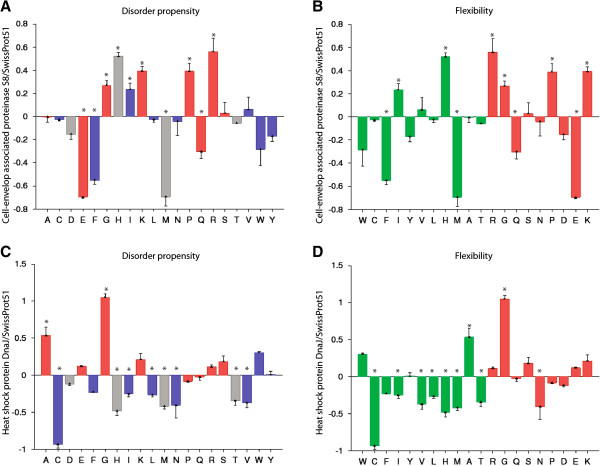Figure 3.
Amino acid composition for DnaJ and cell-wall peptidase S8, the two proteins in clade II that showed cold-adapted features. Analyses were performed using Composition Profiler [91] and the SwissProt 51 database [92]. Amino acids (aa) are shown on the x-axis. The y- axis represents the fractional difference between the aa distribution in the protein sample and in the background database; enriched aa are represented as positive values in the y-axis, depleted amino acids are represented as negative values in the y-axis. Bars with a *represent significant difference in aa composition (relative to the composition of the background proteins). Data for DnaJ are shown in panels A and B, while data for cell-wall peptidase S8 are shown in panel C and D. Panels A and C show aa composition features relevant to disorder propensity; aa residues are in alphabetical order and colored according to their disorder propensity: disorder-promoting residues are in red, order-promoting residues are in blue, and disorder–order neutral residues are in grey. Panel B and D show aa composition features relevant to flexibility; aa residues are ordered based on protein flexibility starting with the most rigid aa: rigidity promoting residues are in green and flexibility promoting residues are in red. Abbreviations: alanine (A), cysteine (C), aspartic acid (D), glutamic acid (E), phenylalanine (F), glycine (G), histidine (H), isoleucine (I), lysine (K), leucine (L), methionine (M), asparagine (N), proline (P), glutamine (Q), arginine (R), serine (S), threonine (T), valine (V), tryptophan (W), tyrosine (Y).

